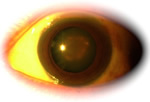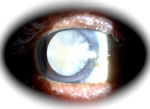Back to Cataract Menu
†


†
†
†
†
†
†
†
†
†
†
†
†
†
†
†
†
†
†
†
†
†
†
†
†
†
†
†
†
†
†
†
†
†
†
†
†
†
†
†
†
†
†
†
†
†
†
†
†
†
†
†
†
†
†
†
†
†
†
†
†
†
†
†
†
†
†
†
†
ACS Eye Specialist Centre
95G & 97G Jalan TKS 1,
Taman Kajang Sentral,
43000 Kajang,
Selangor, Malaysia.
Tel: 03-82116078
Waze or Google Map
Cataract FAQ's
A treatable eye disease
What is a cataract?
A cataract is an opacity in our natural lens.Can it be removed by eye drops or medication?
There has not been any eyedrops or medication proven to cause cataracts to disappear just like that.What about herbal remedies?
Herbal remedies have been marketed as being able to prevent, reduce or even reverse cataracts. However apart from anecdotal reports, no herbal remedies have been scientifically proven to prevent, reduce or reverse cataracts as miraculously purported.Can children get cataracts?
Yes, children can get cataracts. Some babies are born with cataracts. Others may develop cataracts due to trauma and systemic diseases.What sort of surgery is required?
The surgery that is required is basically the removal of the lens that is cataractous together with the implantation of an intraocular lens.How is the cataract removed?
The cataract can be removed as a whole, thus requiring a larger incision , or it can be broken up into smaller pieces e.g. using ultrasonic energy and then sucked up. This will use a much smaller incision size.How long does the surgery take?
The surgery for phacoemulsification takes on average between 15-30 minutes depending on the skill of the surgeon as well as the difficulty of the cataract that has to be removed.What is the difference between ECCE & the newer Phacoemulsification, other than the pricing?
ECCE stands for Extracapsular Cataract Extraction. The wound made in ECCE is larger than that of phacoemulsification and requires suturing. Phacoemulsification uses a small incision which is about 2.75 mm or less. This results in faster wound healing and less induces astigmatism which gives the patient faster visual rehabilitation.How soon can I return to normal life?
With the modern technique of phacoemulsification, the return to normal life ranges from days to a week, provided there are no complications from the surgery. In the older methods (i.e. ECCE) of cataract extraction the recovery takes longer, about 1 month.When will I be able to see?
After an uncomplicated phacoemulsification method, patients will be able to see reasonably well the following day provided the other structures in the eye are healthy. For the older techniques (i.e. ECCE) of cataract operation, the vision may take 1-2 months before it stabilises.Do I have to wear glasses?
You may need to wear reading glasses or have glasses for distance. This depends on your functional activites and the post operative vision that you acquire.I have heard there are multifocal artificial lens that can be implanted. Does that mean I can do without glasses?
Yes, there are multifocal lenses that can be implanted. These are meant to provide patient with a continuous range of both far and near vision. There are patients who have been able to do without glasses using multifocal lenses. However there are also patients who have been unhappy with the result. You will need to consult your ophthalmologist as to whether you are a suitable candidate for multifocal lenses. These lenses are more expensive than monofocal lenses.I understand there are different types of artificial lens available to be implanted in place of the natural lens, and they are priced differently. Is there really a difference?
There are different intraocular lenses available in the market. The foldable lenses that are used for small incision surgery like phacoemulsification tend to be more expensive than the rigid one that are usually made from PMMA. The pricing varies because of the material used to make the lens as well as certain special features that the lens manufacturer puts in such as square edge design, UV light filters, blue light filters, wave front technology to compensate for spherical abberration and anti glare technology. Having a good quality lens implanted in your eye does make a difference as this lens will serve you the rest of your life. Your surgeon will be able to advice you on the different type of lenses available.Why do post surgery patients wear sunglasses?
Patients feel more comfortable with sunglasses because once the natural lens is removed, and an implant is put in, some patients experience glare.Why is it some hospitals will require the patients to stay overnight for the cataract operation, whereas the private surgeries allow the patient to go home in less than an hour after the operation. Are there higher risks by not observing the patient overnight?
Modern cataract surgery is normally conducted as a daycare procedure these days in developed countries. There is actually no need for the patient to stay overnight unless he or she wants to, or the patient has medical conditions that require observation. As the cataract operation is done under topical or local anaesthesia, there are no side effects that are caused for example by general anaesthesia such as nausea, dizziness and drowsiness. Therefore the patient can get up and walk immediately after the operation. Most patients prefer to rest in the comfort of their home environment and where the patient has to pay for the hospital stay, this results in additional savings in terms of cost for the patient. Daycare cataract surgery has been a successful and safe practice. The doctor will be able to advice you on whether you are a suitable daycare candidate based on your health. Where necessary, doctors will still admit a patient who requires observation if the need arises.I have heard about this procedure called Laser-Phaco, what is it? Is it newer and better than the normal Phaco?
Phacoemulsification uses ultrasonic power to fragment the cataract into smaller pieces thus allowing it to be removed through a small incision. Some machines use laser to perform the same function. However the laser is more suitable for soft cataracts and hard cataracts are generally difficult to remove with laser and will take a longer time.Overall laser phaco takes longer to remove the cataract than when using ultrasonic power. When it first appeared, it was touted to be safer than ultrasonic power systems, however in the last few years, advances in ultrasonic systems have changed that concept with the continued development of ultrasound technology, lower energies are used with the new ultrasound improvements compared to most of the laser systems.
These days most surgeons in developed countries continue to choose to use ultrasound power to remove the cataract as new ultrasound equipment upgrades have produced improved results in all these cataract categories, giving ultrasound phaco machines a new edge. Clinical studies on Laser-Phaco is still on going with its continued development along with many other new methods of cataract removal like plasma energy, water pulses, sonic wave energy and high-speed rotary-impeller technology.
What about bi-manual phaco, I heard that this is the latest method.
Bimanual phacoemulsification is an emerging technology that uses 1.1mm incisions to perform the phacoemulsification. However lens technology has yet to catch up. The currently used lenses still require enlarging the wound after phacoemulsification in order to insert the lenses thus in some ways defeating the purpose of such a small incision. As intraocular lens technology improves and allows for insertion through smaller incisions bimanual phaco may be used more widely. At present, there is no difference in the end visual result between bimanual phaco and conventional phacoemulsification.Some surgeons claim that their equipment is the latest and newest surgical machine, does that actually affect the outcome of the surgery?
The outcome of the surgery depends on many factors such as the condition of the patientís eye prior to surgery, the measurements of the eye that are used to calculate the intraocular lens power, the skill of the surgeon and to some extent the equipment used to perform the surgery. Having the latest and newest surgical machine may not necessarily mean that the surgery will be a 100% success, however it may make it a safer and quicker surgery as the latest machines tend to have more safety features and software to make phacoemulsification more efficient.Some people have been asked by their surgeon to undergo bilateral cataract surgery. What is bilateral cataract surgery?
This means having both cataracts removed at the same sitting, one after the other. Traditionally this is not the preferred method of choice. The reason being, should one eye get infected, the other has a high possibility of getting infected as well. In bad cases of infection, both eyes could go blind. Some surgeons may get the patient to have both cataracts removed at the same sitting because it may save the patient from making another trip to the operating table. This may save the patient some money especially if the patient has to pay for each session the operating theatre is in use. In some cases where multifocal lenses are used, the patient often finds it difficult to adjust if only one eye has the multifocal lens. In those instances, the surgeon may suggest bilateral cataract surgery.Bilateral intraocular surgery still causes much debate and perpetual disagreement among ophthalmologists. The main apprehension is the risk of bilateral catastrophic complications such as endophthalmitis ( infection inside the eye). One should only undergo such a procedure if one is understands the possible risks. In the rare instance that one should experience some trauma e.g. falling down stairs just after the surgery, the wound of both eyes could open up and require bilateral surgery to repair the wound. This again results in double trouble!
What is meant by no-stitch surgery?
With phacoemulsification, the incision size of the wound is often less than 3 mm. Therefore in most cases, there is no need to use sutures to close the wound. In some cases where the wound does not seal properly, the surgeon may need to place a temporary stitch to ensure that there is no wound leak post operatively. This is important to do so as if the wound leaks there are potential problems such as low eye pressure or infection.Back to Cataract Menu